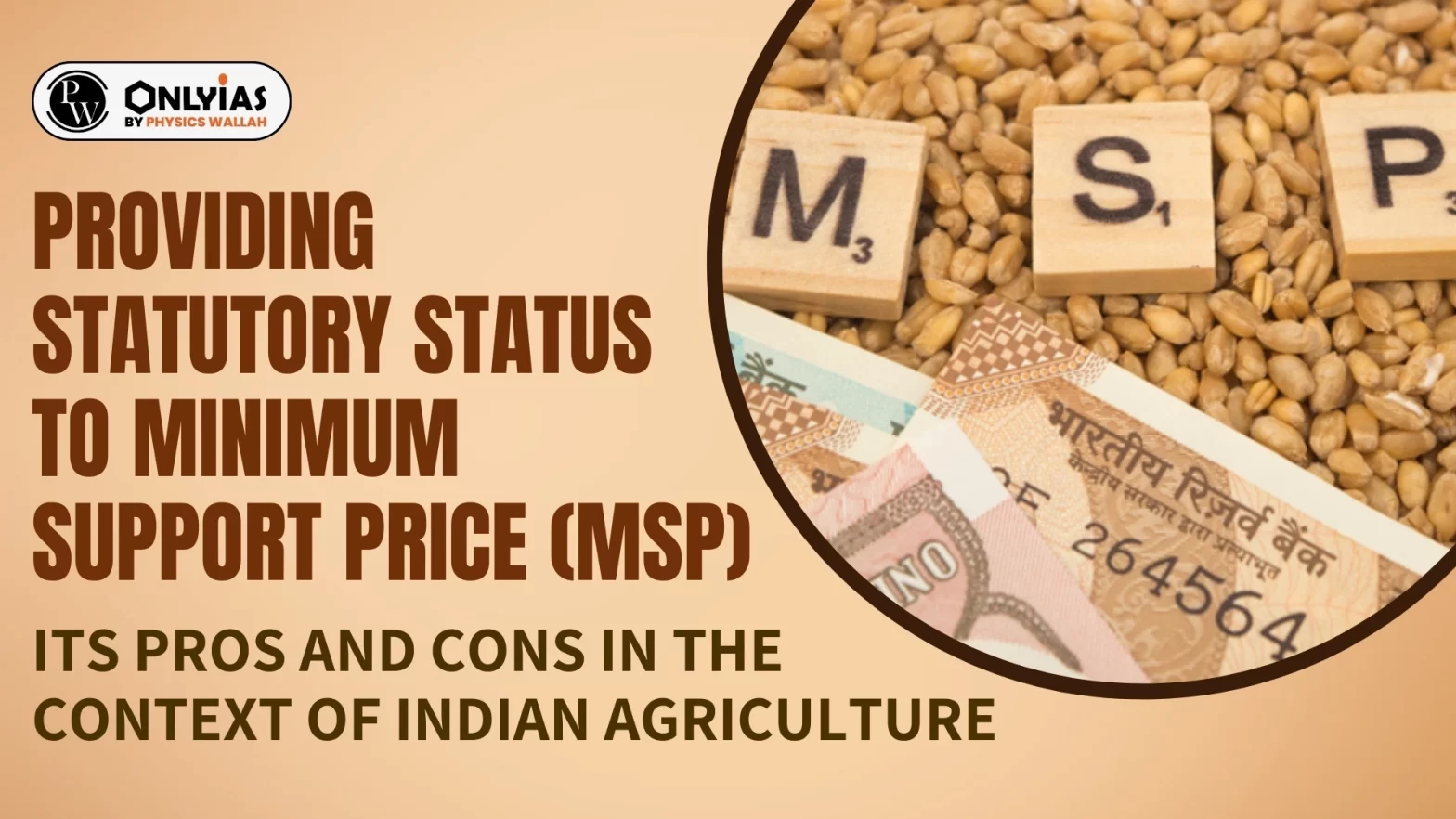![]() 9 Jan 2024
9 Jan 2024

Context: This editorial is based on the news “The question of MSP: Is income support for farmers better than pricing that is delinked from market demand?” which was published in the Indian Express. As the Lok Sabha elections approach, there could be a clamour for parties to include “legal guarantee for MSP” in their manifestos.
| Relevancy for Prelims: MSP, Commission for Agricultural Costs and Prices (CACP), and Price Deficiency Payments (PDP).
Relevancy for Mains: Minimum Support Price (MSP): Pros and Cons in the Context of Indian Agriculture. |
|---|
Also Read: Cabinet Raises MSP For Six Rabi Crops
What is Minimum Support Price (MSP)?
|
|---|
About Price Deficiency Payments (PDP)
|
|---|
|
Must Read |
|
| NCERT Notes For UPSC | UPSC Daily Current Affairs |
| UPSC Blogs | UPSC Daily Editorials |

<div class="new-fform">
</div>